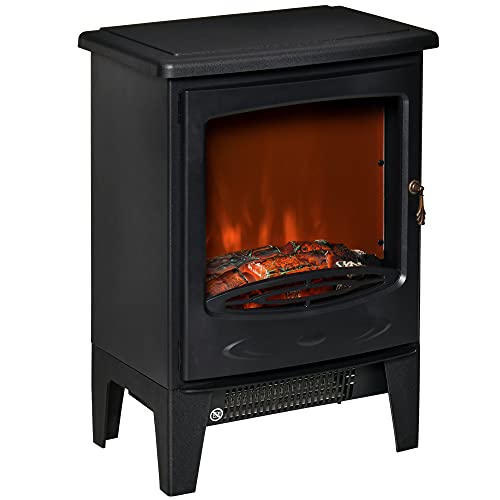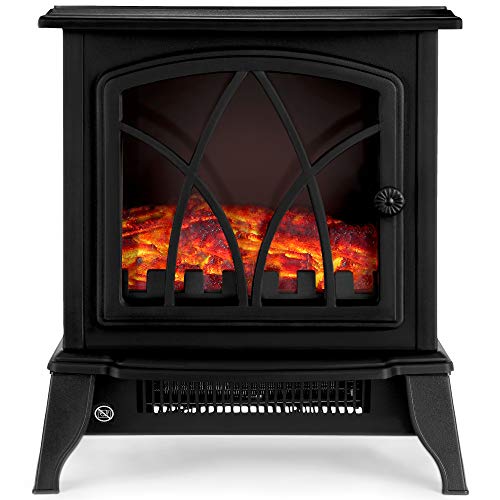The Reasons Stoves Electric Is Everyone's Desire In 2023
페이지 정보
작성자Shelley 댓글댓글 0건 조회조회 14회 작성일 24-11-16 02:21본문
 Why Stoves Electric Are the Green Choice
Why Stoves Electric Are the Green ChoiceA Brooklyn co-op has replaced 49 gas stoves including induction and radiant models, with electric ones. The switch will save the co-op money and get rid of expensive gas line repairs and inspections required by Local Law 97.
In contrast to gas stoves, electric stoves release no carbon dioxide or other harmful emissions during operation. The energy to power your electric stove is generated by renewable sources like wind or solar.
It is safer
Many homeowners were reluctant to switch their gas stoves to electric ones in the past. This was because of the hysteria created by politicians and pundits who claimed that government bureaucrats were threatening to pull gas stoves off their walls. However, the reality is that there are lots of advantages to using electric over gas. This includes a sleeker design and a lower cost at first. They are also less difficult to clean and are more energy efficient.
Consumer reports indicate that gas stoves can release pollutants that are harmful to health. These pollutants can irritate the airways and can cause asthma to worsen, especially for children. These emissions can contribute to pollution in the outdoor environment and greenhouse gases. Gas stoves are now a source of concern and some local governments have banned their use in new construction. More people are installing electric stoves at home.
Gas stoves are more expensive to operate than electric stoves because they require gas piping and are less energy-efficient. They can also be prone breakdowns and need regular maintenance. On the other side, electric stoves provide greater reliability and are efficient in terms of energy consumption. They can also be used during power outages and offer more precise temperature control. They are also easier to clean because they don't have grates that could become blocked by food particles.
It is up to each homeowner to decide which type of stove they want to install at home. It is crucial to remember that electric stoves are most popular. But, the choice should be based on their personal preferences and home set-up.
There are three kinds of electric stoves: coil top, glass-top, and induction. The first two are identical in that they use 120 volts of electricity to heat the burners. However, induction stoves are different from traditional electric stoves due to the fact that they utilize magnetic technology to heat cookware instead of metal coils. Although they are more energy efficient than coil stoves, induction stoves have more expensive prices.
They are more efficient
There are many reasons to change from gas stoves to an electric stove which includes their greater efficiency. The initial cost is higher, but electric stoves will save money over time due to their lower operating costs. Additionally, they have a smaller carbon footprint. This makes them an excellent option for green homes.
The way that electric stoves use energy is also more eco-friendly than a gas stove. Electric stoves make use of electricity generated by renewable sources, such as wind or solar power, whereas gas stoves use natural gas which can be obtained through fracking. Furthermore electric stoves do not emit any of the byproducts of combustion that gas stoves do.
The click, hiss and glow of the blue flame might still be appealing to many cooks. However, it has hidden costs for both humans and the environment. A variety of studies have confirmed that natural gas stoves can be harmful to the human body and the environment. Fortunately, top chefs such as Tu David Phu are switching to electric stoves and urging others to follow suit.
The energy produced by a gas stove contributes to the heat-trapping emissions that cause climate change. The reason is that natural gas has to be extracted from the earth, and methane is released into the air during this process. In addition methane leaks happen at every step of the supply chain from production to delivery.
When cooking on a gas stove the chemical products of combustion of the natural gas burn in the air, releasing ultrafine particles and gases into the air. These pollutants can cause irritation and can cause asthma-related symptoms, particularly in children. Additionally, the burning of gas generates nitrogen oxide, which can aggravate respiratory issues and can be poisonous if breathed.
An electric stove, on the other hand it does not release these chemicals into the air. While the electricity that powers electric stoves can be derived from coal, advances in solar and wind energy make this a more sustainable choice. A new generation of electric stoves is so efficient they not only reduce the cost of your home, but they also reduce your carbon footprint.
It is less expensive
Electric stoves are generally less expensive than those powered by gas. Electric stoves are more affordable upfront and have lower running costs due to their high-efficiency technology. Additionally they can be used during power outages. They are also safer to use since they use heated coils or burner surfaces instead of open flames. This feature is especially helpful in households with children who might be enticed to play with knobs or stick their hands into hot spots.
electric logs for fireplace (https://images.Google.cf/) stoves are also simpler to clean. Instead of multiple grates, they have one smooth surface that is easy to wipe down. Additionally, you can gauge the temperature on dials to know exactly how hot to cook. However, this can also be a disadvantage, since it may take some time to adjust to the heat level.
It's also important to note that gas stoves release pollutants into the air, which could affect people's health. The gas industry claims that these emissions aren't harmful but federal agencies are considering more stringent regulations to reduce their impact on climate change as well as indoor air quality. These modifications could lead to the eventual ban on gas stoves.
Finally, there's the fact that gas stoves require a gas line in order to operate, which a lot of homeowners don't have. Although it is possible to install a new one, this process can be costly and time-consuming. Meanwhile, electric stoves only need a power outlet, which most homes already have. This makes them an excellent choice for older homes as well as for those on smaller budgets.
Many people are also eligible for rebates on stoves, which are energy-efficient. This program, which is part of the IRA's High-Efficiency electric stove heater Home Rebate (HEEHRA) is not yet been officially launched, but is likely to be in all states by the end of the year. These rebates will make the move to portable electric burners cooktops an affordable option for a large number of people. Additionally electric stoves are less expensive than gas stoves in the long run and they can also help reduce household energy costs.
 The products are eco-friendly.
The products are eco-friendly.Electric stoves are the most efficient method to reduce carbon emissions. Gas stoves emit harmful toxins such as carbon monoxide and nitrogen dioxide. These toxins are connected to a range of health issues, including headaches, nausea, confusion, dizziness and breathing problems. Moreover, they can also cause indoor air pollution, which has been found to contribute to the higher incidence of asthma in children.
Thankfully, these issues are driving gas stoves out of homes in favor of more efficient electric cooktops. electric log effect stoves ranges are not only less expensive to run than gas stoves, but also better for the planet. Electric stoves are less harmful than gas stoves. They can be powered by renewable energy sources, in contrast to gas stoves that are powered by natural gas. This makes them a green choice for any household.
electric heating stove stoves are also more secure than gas stoves. Since they don't use an open flame, they are safer than gas stoves, and don't generate as much smoke. They can also cook larger food items like stockpots, more quickly and more evenly than gas stoves. Electric stove coils cool down faster than the gas stove. This ensures that pots and pans will not ignite, which is important for households with elderly or children.
It's important to consider the impact on the environment when you choose an electric stove. There is a fact that fossil fuels are used to power electric stoves, but it's all that bad as you may think. In reality, it's a far less harmful form of energy than coal or oil. In addition, you can obtain the electricity to power your stove using solar or wind power and both are renewable sources of energy.
Many cities prohibit gas hookups for new construction even though the government doesn't have any regulations for the indoor air pollution caused by gas stoves. The government is also offering billions of dollars in rebates to help customers to switch to electric stoves. Electric stoves are now cheaper and popular thanks to these incentives, along with new green technology.
댓글목록
등록된 댓글이 없습니다.

